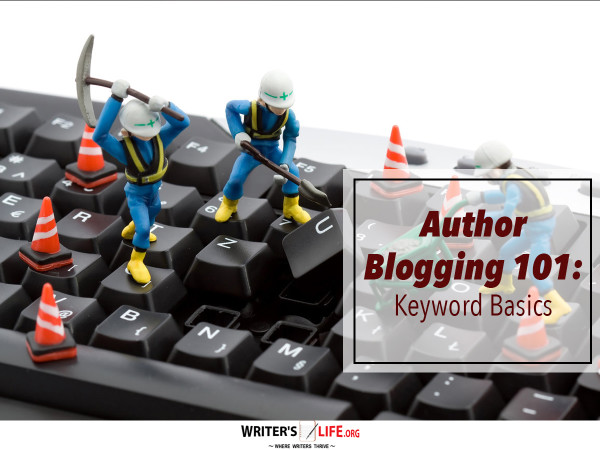 What does it really take to build a writer or author platform?
What does it really take to build a writer or author platform?
Money?
Connections?
An intimate knowledge of vampires, wizardry or erotic romance?
Actually, the most important aspect to building an author platform is understanding that it’s about engagement; about connecting and interacting with people who are aligned with your message and affected by your story.
Your platform is a web of intertwined beliefs, values, emotions, thoughts, stories, images and ideas that stem from your own core philosophy and are ultimately shared by your fans.
The tricky part is finding ways to effectively share your message with an audience that is yet unknown to you, and you to them.
Establishing and maintaining a link to your potential ‘tribe’ is both the challenge and the reward of building your writer platform.
What can you do today to craft a powerful writer platform?
By understanding that your ultimate goals when creating a writer platform are to find, engage and cherish your audience, it makes the application of the tools much more effective.
But remember: insight is useless if you don’t take action. So, go through the list of tools and strategies below and choose those things that you can easily do today.
By starting with what you can easily accomplish you will a) be more likely to complete the tasks, and b) gain the confidence to start implementing some of the more challenging items on the list.
Ready? Go!
1. Define your ‘why’. Define your central philosophy. How do you want to be known, what makes you different and what is the message you feel you must share with the world?
2. Plan your destination. Knowing where you want to go is the first step in getting there. What are your goals? Who is your current, potential or future audience? What are your short term and long term plans?
3. Storytelling elicits engagement. Marketing is–at it’s core–about creating engagement, and we tend to engage the best through stories. Craft your story, and the message that describes your work and your author brand.
4. Research your target audience. Knowledge of your ideal reader should be detailed and thorough. What is their age, sex, income, education, passions, needs, routines, values, and goals? Where do they spend their time online and off? Who can help you access them?
5. Research your market, niche or genre. Study the competition. Search Google with keywords specific to your market or genre; who pops up? Search your favourite or popular authors in your genre; what are they doing–or not doing–that you can adapt to your writer platform strategy?
6. Setup your professional website. Invest in your own self-hosted website. Having a .blogspot, .WordPress, or .Typad in your domain name denotes amateur status and that is not how you want your work or your author brand to be perceived.
7. Tweak your tagline. Ensure that your tagline captures the essence of your work and lets people know within seconds what you’re all about. Stumped? Try How to Create a Rock-Solid Tagline that Truly Works by Copyblogger.
8. Get business cards. This should be obvious, but many authors fail to get and share their business cards. Make sure to include your website, email, one or two social media sites you’re active on, and perhaps a professional headshot. Your business cards should reflect your brand image.
9. Build your list. Building an email list is arguably the most important element to building an engaged following and getting your message heard. Readers who allow you access to their inbox are a gift and should be treated like gold! Consider using a good email service like Aweber* to manage your subscribers.
10. Join Twitter. Learn tips, tricks and best practices for getting the most out of Twitter here:Twitter Marketing 101: for Writers.
11. Create your Facebook Fan page. There is a difference between your Facebook profile and a Facebook page. Learn how to create an author Facebook page here.
12. Get Hootsuite. Or a social media management tool that helps you execute your social media campaigns over multiple networks.
13. Use Google Keyword tool to research post titles. Find out what your readers are searching for online, and the words they are using to do it by taking advantage of the Google Adwords Keyword tool.
14. Create your bio. Take advantage of the opportunity to highlight your expertise and accomplishments by creating a bio to use where your name appears online (guest posts) or when being introduced offline (speaking engagements).
15. Get some shots. Share great moments and increase your authority by incorporating photos of you writing, during speaking engagements, at a book signing or teaching a workshop. Use these on your blog or for offline promotional media.
16. Make a list of the top 10 – 100 authors, bloggers, industry thought leaders in your genre. Review their sites; make yourself known by commenting, connecting via social media or through an email that says “I’m inspired by the work you are doing.”
17. Start commenting. If you already have a blog, you know how difficult–and how rewarding–it is to get comments on your posts. Take the time to add insights, ask questions or provide feedback on other author blogs. Do this regularly and blog owners will notice.
18. Create a freebie. An ‘ethical bribe’ helps to remove the friction for those readers hesitant to hand over their email address. But even free stuff has to hold significant value for a potential reader, so take the time to craft something truly valuable to make email optin a no-brainer.
19. Subscribe. Get yourself on the email list of authors, bloggers and business sites you admire to get some *free* email marketing tips by noting what they do and how they’re doing it.
20. Set up Google Alerts. An easy way to stay up-to-date on news and happenings in your niche, respond to your press and curate content. Google Alerts is a free service that allows you to specify names, phrases or keywords that relate to your topic or area of interest, and then forwards the results for those search terms to your inbox.
21. Become an expert in your field. Not one action, but many small actions can help you become viewed as an expert in your topic of interest: teach a class, guest blog, offer to speak, answer questions on other blogs or forums and so on.
22. Sign up for HARO (Help a Reporter Out) and respond when someone needs a quote on your subject.
23. Follow up on breaking news. Connect your expertise with hot stories that are happening right now. Get in touch with the media and let them know you have a book in the works or are already published on this topic.
24. Write a pillar post. A pillar article is typically one that orients your reader to what you are all about. It will include evergreen content, reflect the core values of your author brand, and it should answer a question or a need. Yaro Starak of Entrepreneurs-Journey.com, provides a good definition here.
25. Research offline associations. Clubs, associations and groups with interests that tie into your book can be quite influential and very supportive. Introduce yourself and your work and see if there is the potential to create a beneficial partnership.
26. Set up a social media schedule. Don’t let the social media black hole pull you in and prevent your escape; schedule time for activity on the social media platforms you are active on, and do not allow yourself to lose time flitting aimlessly about. See #12 and set up a management tool to simplify.
27. Get some business advice. Like it or not, writing is both an art and a business. Authurprenuers must learn at least some basic business principles, and source advice from professionals that can aid in the advancement of their writing career.
28. Join LinkedIn. Launch a group to cultivate community. Here’s an article by Stephanie Sammons on Social Media Examiner to show you How to Build a Thriving LinkedIn Group.
29. Add to your list of influencers. Continue to research and identify those people in your area of interest who carry influence, not only with your ideal reader, but with other industry professionals. Getting on the radar of these influencers can be very beneficial; influence can often be contagious!
30. Create an editorial calendar. Whether it’s a calendar on the fridge–or the WordPress Editorial Calendar Plugin–help eliminate writer’s block by creating an editorial calendar to map out your posts for the next several weeks and months.
31. Set up Google Analytics. The idea may be abhorrent to some, but analyzing and monitoring your website traffic is critically important. Understanding who is visiting your site, how they got there and what they are looking for is essential information for growing and expanding your writer platform.
32. Organize your email groups. Not all your readers will fit into the same neat category. Identify subgroups and share information that is pertinent to that particular group. Again,Aweber* works very well for creating separate mailing lists.
33. Learn to write ‘throat grabbing’ headlines. The majority of your readers will use your post’s headline to decide whether or not to read your article. With that much weight placed on just a few words, getting them right is essential. For just the price of your email address, you can getJon Morrow’s 52 Headline Hacks; a great cheat sheet for crafting the perfect headline.
34. Include a call to action at the end of your posts. If you’ve managed to entice your reader to the end of your article, make sure that you take advantage by asking your reader to do something: share the article, subscribe to your email list, leave a comment or question. OptinSkin* is what I use on YWP. It’s a premium plugin that allows me to create custom optin forms and social share boxes, and place them anywhere I want within my post or page.
35. Revamp your about page. Despite being one of the most visited pages on your entire site, About pages are often the most underdeveloped and under-utilized. For tips on getting your About page right (and more), check out my post on 11 Author Website Must Have Elements.
36. Make it easy to share. There are many WordPress plugins available that make this a snap. The one you see along the left side of this article is the Digg Digg plugin. And as mentioned previously, I love the versatility of the premium OptinSkin* plugin for handling both social sharing, and email sign up, in one.
37. Be everywhere. Or at least be wherever your ideal readers are. Consider incorporating one or more of these social media networks into your platform building strategy: Goodreads, Wattpad,Amazon Author Central, Pinterest, and Google+,
38. Search yourself. Do a Google search on yourself, your books, and your brand to see what other people are seeing when they do a similar search. Are you surprised (or embarrassed) by what you found?
39. Engage with your fans. Roll out the read carpet for your first subscribers and commenters. Often these early supporters become your biggest and most loyal fans. Treat your ‘tribe’ to special offers, perks and ‘insider secrets’. Communicate regularly via email and respond promptly to comments, feedback and requests.
40. Create some link love. People love the sound of their own name, and they are especially partial to being mentioned or quoted online. ![]() Take the time to email the author or blog owner and let them know they were mentioned in your article. If you’re lucky, they may even share a link to your article with their followers!
Take the time to email the author or blog owner and let them know they were mentioned in your article. If you’re lucky, they may even share a link to your article with their followers!
41. Add value. Look through all your platform building endeavours and ask yourself “Where can I add value?” Contribute more, give more. People will notice when you consistently add value to their experience.
42. Create a list of 20 popular sites that accept guest posts. Start with the sites you are already familiar with or subscribe to (you’ll already be familiar with their target audience, how they tend to format their posts and so on). Find out their guest post guidelines and research some of their recent and most popular articles.
43. Pitch a guest post. Take what you did in #42 and apply what you learned to craft a ‘no-way-they’ll-say-no’ pitch. More tips? Check out Neil Patel’s post: How to Get Your Guest Post Published.
44. Be helpful. Share useful links and answer questions on social media. Become a resource. Ask your readers what they are struggling with and provide answers if you can. Share your experiences, failures, and success in a way that can help people find a shorter path to the outcome they seek.
45. Invest in yourself. Find courses, books, conferences and people that can aid in your learning and success. Also invest in tools and resources that will simplify your business and writing processes while increasing your credibility and professionalism.
46. Speak. Start with local, free speaking opportunities and then move up as you gain experience and visibility.
47. Interview other authors and influencers. Many authors and industry influencers will give interviews via email and Skype (as well as in person) so don’t let geography be a deterrent.
48. Understand the basics of SEO. There’s no need to be an expert, but understanding the basics of search engine optimization can help you increase an article’s chance of getting noticed.
49. Try PicMonkey for photo editing. For those of you who don’t have the time, money or inclination (read skills) to edit your photos with Photoshop, PicMonkey will more than satisfy your needs.
50. Update your profiles. Go through all your social media profiles and ensure they are up to date. Make sure your photo, bio, links and brand elements are current and close any accounts that you are no longer active on.
51. Sign up for Google Authorship. Stand out by getting your picture in Google’s search results! Follow this tutorial by Andy Crestodina over at Kissmetrics to get set up.
52. Develop backlinks. Backlinks are the incoming links to your website or webpage. The number and quality of backlinks is one of the most important factors to determining your websites search engine ranking, popularity and importance. For a monster resource, try Neil Patel and Brian Dean’s Advanced Guide to Link Building.
53. Host guest bloggers. A great way to build your network and increase value to your readers is to allow quality guest posts from other authors or bloggers who can add new insights, personal experience or additional expertise to your topic.
54. Submit an article to an offline publication. Research magazines, newspapers, journals, industry newsletters, etc. that are read by your audience and submit relevant articles.
55. Update your subscribers when you publish a new post. Don’t forget to share your new posts with your email list, and bring a surge of traffic back to your blog!
56. Tweet a link to your new blog post. Make sure your Twitter followers get an update of any new articles. An easy way to do this is to test your social share buttons and experience what your readers will see when they share the post with their followers. You can also check your Click to Tweet quotes to make sure they are working properly, as well.
57. Set up your YouTube channel. According to YouTube statistics: “Over 6 billion hours of video are watched each month on YouTube—that’s almost an hour for every person on Earth, and 50% more than last year”. Even the shy writer can find ways to overcome their reserve with stats like that! (To learn how to set up your YouTube channel try this video tutorial.)
58. Go video. Create a book trailer or 5 minute behind-the-scenes video. Upload it to your fancy new YouTube channel!
59. Hold an event. A book launch, giveaway, or contest; create an environment that builds buzz, pulls people in, and gets your audience interacting.
60. Be interviewed. Accept any and all offers to be interviewed for a blog, podcast, TV show, or radio. Terrified? Here’s a post by Chris Robley at The BookBaby Blog with 5 ways to give a great author interview.
61. Develop friendships. Network with like-minded individuals. Be friendly and available. Make it easy to contact you and reply promptly to anyone reaching out. Start a conversation to learn about the other person, not to promote your own agenda. Listen.
62. Start a podcast. This one is a bit intimidating, even for me ![]() If you’re keen, check out Pat Flynn’s super comprehensive: How to Start a Podcast tutorial.
If you’re keen, check out Pat Flynn’s super comprehensive: How to Start a Podcast tutorial.
63. Capitalize on images. Like your headline, your blog post image is an extremely powerful tool. It’s purpose is to capture the spirit or crux of your post and draw readers in to read the rest of your content. Take advantage by carefully choosing, editing and positioning your images both on your site and in print material.
64. Pitch yourself to local media. Don’t forget about traditional media. Offer to be interviewed, provide a quote, contribute an excerpt from your work, offer to be a source–in short, be available, dependable and helpful.
65. Go to a conference. But make sure you get your money’s worth. Have your business cards (#8), a relevant 30 second elevator pitch (your name, what you do, why your there), and spend time meeting people that you feel you can develop a relationship with. Focus on speakers, conference organizers and even your ‘competitors’.
66. Create a media kit. For what to include in your online press or media kit, check out this article here, by Joel Friedlander on The Book Designer.
67. Check your links. Do your social media and sharing buttons still work? Check and fix any broken links or non-functioning share buttons to increase user experience and ensure that your site is perceived as credible and up-to-date.
68. Poll your readers. Why guess what your audience wants, when you can ask them? Email your subscribers and ask them what they are struggling with or use free, online survey software likeSurvey Monkey to poll your readers.
69. Keep a journal or swipe file. Ideas and inspiration can come from anywhere, so when you see something that can benefit your readers, twigs an emotion or a thought, or points to an avenue that needs pursing, save it for future reference.
70. Share freely. Excerpts, a reading, a short story, the first novel in a series, free giveaways, how-to blog articles, curated resources–be creative and share what you can.
71. Make your email signature work for you. Add your site URL and include the social media sites you’re active on like Twitter, Facebook or Google+.
72. Highlight your best work. Display your most popular posts in your sidebar or on your homepage slider, Tweet older–but still useful–posts on Twitter, or create a ‘New Here?’ page on your website and round up your best posts in certain categories.
73. Repurpose older content. Create YouTube videos or SlideShare presentations from evergreen, pillar or how-to articles. Write new articles from a different angle or point of view and reference the older article. Compile older articles into an ebook.
74. Brainstorm. Alone, or with a group–brainstorm regularly so that no good ideas that are rolling around in your head go to waste.
75. Review the work of your peers. Good Karma aside, reviewing other author’s books will help to build relationships, your authority and may even create potential partnership opportunities.
76. Partner up. Successful people rarely get that way be doing things alone. Look for ways to combine your talents with the skills of other authors, editors, bloggers and industry experts. You may even find success by partnering with other artists and creatives or with individuals in a completely different industry.
77. Track your links through Bit.ly.com. Shorten your links to save space when Tweeting, and track how many people click on your link so you can promote the content your audience finds most appealing.
78. Find a reading opportunity. Introduce yourself at your local bookstores and library, and do a little research to see if there are opportunities available to do readings.
79. Tweak your website. Make sure your site is media friendly, your contact info is prominent, your About page is optimized and up-to-date. Does your site accurately express and represent your author brand? De-clutter and make sure you’re not making these blog post blunders.
80. Do a webinar or teleseminar. A little more difficult technically, but well worth the effort and increased learning curve as well as the added authority.
81. Tie your book into a charity. If it makes sense to do so, this is an excellent way to increase your visibility and your potential reach.
82. Make a list of the top 200 blogs on your topic or genre. There is so much to be gained by staying current in your market, knowing who the influencers are, and understanding how your potential readers respond to the articles, marketing and promotional efforts of your ‘competitors’.
83. Contribute your thoughts and expertise on writing forums. Nothing gives you more credibility in the eyes of a reader than being able to solve a problem they haven’t been able to solve themselves. Build authority and influence by participating in LinkedIn discussion groups, Google+ Hangouts, writing forums and adding your comments on other blogs.
84. Watermark your photos, graphics and other imagery. Benefit from the impact of your great blog post photo or graphic a second time by adding your site URL to your image. Just in case your site link somehow gets lost, readers can still find their way back to your site.
85. Share testimonials. Set up an endorsement/testimonial page on your site. Testimonials allow other readers to identify with your current fans and reinforce how your book or your work will resonate with them too. Testimonials are also a great form of social proof.
86. Tidy Twitter to build your followers. A good way to keep your follower/following count under control is to use JustUnfollow. Unfollow those Twitter users who are not following you. This allows you to follow more people who are of interest to you, without looking spammy (i.e., following more people than are following you).
87. Say thanks. Find ways to thank your fans for their support. Give your core fans an advanced copy of your upcoming book, offer special discounts, or create exclusive insider resources or info.
88. Encourage your fans to get involved. Encourage your fans to create book trailers for your upcoming book, design merchandise, brainstorm cover ideas, take and share pictures of themselves reading your book or applying your principles.
89. Highlight reel. Create a ‘behind-the-book’ or special features section on your website. Add unused tidbits, alternate character POV’s, soundtracks, additional research or anything else that might draw your reader further into your book.
90. Join a book club or writer’s group. It’s easy to get stuck in your own head and see your work from only one perspective. By joining a club or group, you can begin to see a variety of interpretations and use that to tweak your work or apply it to your marketing strategy.
91. Learn and use appropriate Twitter hashtags. Help your useful Tweets get seen and shared by even more people by effectively using hashtags. Here’s a great resource by Caitlin Muir at Author Media: 44 Essential Twitter Hashtags Every Author Should Know.
92. Engage with your fans on Facebook. Ask questions, give updates, share videos, pictures and links. And above all? Show some personality!
93. Create a resource page. Round up resources, books, research and courses on topics related to yours. Share your list of resources on social media and with your email list.
94. Offer a testimonial. If you have had an excellent experience with a fellow author, blogger or service provider, share your endorsement on their site. Your recommendation of a quality resource will also add to your credibility.
95. Monetize. Repackage old blog posts and sell them as an ebook. Create a course in your area of expertise or speak on the core topic of your book. Become an affiliate, offer your services, or teach a class.
96. Find a mentor. Mentors are great role models that often have a wealth of information and advice to share. They can help you set goals, cheerlead when needed, and help you discover new opportunities.
97. Be a mentor. For the same reasons you would want a mentor, be a mentor!
98. Ask for feedback. Ensure that your audience has several ways to contact you, then ask your audience for their feedback and encourage interaction. Always try to respond to every bit of feedback; your readers will be more likely to respond to future requests for feedback if their initial response didn’t go unnoticed.
99. Join or create a mastermind group. No matter how successful your writer platform becomes, you still need people to listen to your ideas, support you as your career grows and cheer you up when you get a bad review.
100. Evolve and grow. Just as your fan base will grow and evolve, so too should your platform. You can’t plan for all contingencies when first starting out–new book ideas, new opportunities, new partnerships can knock you off the course you had planned. Don’t worry! Just ensure your still on the path you want to be on, and your fans will follow.
101. Find a balance. Be careful not to spread yourself too thin. Building your writer platform is a long term commitment. Don’t anticipate your audience will materialize overnight, or that you will master these tasks in a week. Create a time management plan and a task list. Schedule activities (including times) so that you know where you stand each week, each month and each year as you build a powerful platform and a successful writing career.
No more reasons to wait
Now is the time to start building your writer platform. Not after you publish your book, not after you’ve convinced yourself you’re a ‘legitimate’ author, and not after you’ve tried getting a traditional book deal. With 101 ways to start building your web of engagement, is there any reason not to start?
Try something above and let me know how it works for you.
Have I missed anything? Please share in the comments below.
*affiliate link (Please note: I will earn a small commission if you buy from one of my links, at no extra cost to you. This helps Your Writer Platform continue to provide loads of free, quality content. I appreciate your support!)
http://www.yourwriterplatform.com/actions-to-build-writer-platform/




























